Disclosure: This article contains affiliate links. We may earn a commission from purchases at no extra cost to you, which helps our travel content.
Standing at the edge of La Concha Bay as morning light bathes the crescent shoreline, I'm reminded why San Sebastian (Donostia in Basque) continues to captivate me after multiple visits. While most travelers come for the world-renowned pintxos crawls—and rightfully so—there's a deeper, more sustainable way to experience this Basque jewel that doesn't involve hopping from one crowded bar to the next. Having optimized supply chains across Europe for two decades, I've developed a keen eye for the hidden pathways and local connections that make cities truly function. San Sebastian rewards those willing to explore on foot, away from the tourist crowds, revealing layers of history, culture, and community that many visitors miss entirely. This weekend walking guide shares my carefully mapped routes through neighborhoods where locals actually live, markets where they shop, and viewpoints they cherish—all while treading lightly on this precious coastal ecosystem.
The Forgotten Pathways of Ulia Mountain
Most visitors to San Sebastian climb Mount Urgull or Igueldo for panoramic views, but the eastern path along Mount Ulia offers a tranquil alternative that showcases the city's commitment to preserving natural spaces within urban boundaries.
On my second morning in San Sebastian, I set out from Gros neighborhood with a small daypack containing water, a light snack, and my compact binoculars which proved invaluable for spotting seabirds along the coastal cliffs. The trailhead begins near Sagüés at the eastern end of Zurriola Beach, marked by unassuming stone steps that ascend into a surprisingly lush microclimate.
What makes this route special is how it balances natural conservation with accessibility. The Basque government has maintained these historic paths—once used by lookouts watching for whaling opportunities—without over-developing them. About 40 minutes into the hike, you'll discover the abandoned Ulia amusement park, where nature has reclaimed early 20th-century structures in a hauntingly beautiful display of urban rewilding.
Continue another 30 minutes to reach a series of viewpoints offering perspectives of the coastline that few tourists ever witness. The path eventually connects to the Camino de Santiago's northern route, a reminder of the region's ancient pilgrimage traditions that predate modern tourism by centuries.
What struck me most was the careful balance between access and preservation. Unlike many European destinations where natural areas near cities become overly manicured, Ulia maintains its wild character while still being approachable for average walkers. This exemplifies the Basque approach to sustainability—finding harmony between human enjoyment and environmental protection.
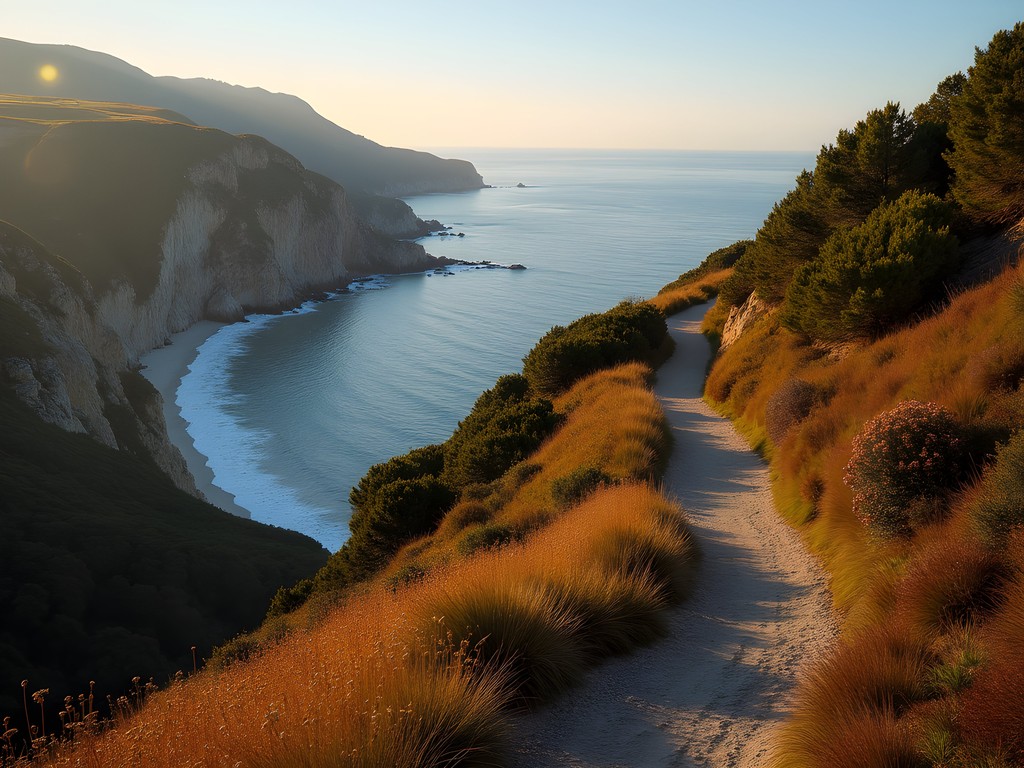
💡 Pro Tips
- Start early (before 9am) to have the trail largely to yourself and avoid afternoon heat
- The path can be slippery after rain - wear shoes with good traction rather than casual sneakers
- Bring your own water and snacks as there are no facilities along most of the route
Antiguo: The Neighborhood That Time Forgot
While tourists crowd the Old Town (Parte Vieja), locals often retreat to Antiguo, the city's original settlement that maintains a village-like atmosphere despite being just a 15-minute walk from the center. This western neighborhood offers an authentic glimpse into everyday Basque life that feels remarkably preserved.
I discovered Antiguo during my first visit to San Sebastian five years ago when seeking alternatives to the mainstream tourist experience. What keeps drawing me back is how the neighborhood embodies the Japanese concept of satoyama—the harmonious border zone where human settlement and nature coexist. This balance is particularly evident in Antiguo's thoughtful urban planning, where narrow streets prioritize pedestrians and small plazas create natural gathering spaces.
Start your exploration at Plaza del Funicular, named for the historic hillside tram that once connected this area to Monte Igueldo. From there, wander the grid of residential streets where you'll find neighborhood bakeries producing traditional opillas (round breads) using methods unchanged for generations. The Matia Kalea shopping street offers a glimpse of authentic local commerce, with specialty shops where proprietors still know customers by name.
For lunch, skip the tourist-oriented pintxos bars and seek out one of the neighborhood sociedades gastronómicas (gastronomic societies) that occasionally open to the public for lunch. These member-owned cooking clubs are the true heart of Basque culinary tradition, where recipes are passed down through generations. While most require a member invitation, Kandela on Calle Miracruz sometimes welcomes visitors for their midday menu.
The neighborhood culminates at Ondarreta Beach, the least crowded of San Sebastian's three main beaches. Here, local families gather on weekends, creating a community atmosphere that feels worlds away from the international scene at La Concha.

💡 Pro Tips
- Visit the Antiguo market on Thursday mornings for the best selection of local produce and artisanal products
- Many small shops still close for siesta between 2-4pm, plan accordingly
- Look for buildings with dates carved above doorways - some structures date back to the 18th century
The Secret Urban Staircases Network
San Sebastian's dramatic topography has created a necessity that became an architectural feature: an extensive network of urban staircases connecting different elevation levels throughout the city. These stairs form a pedestrian infrastructure system that predates modern urban planning but functions remarkably well as a sustainable transportation network.
I've mapped over 30 significant public staircases during my visits, many dating back centuries. What fascinates me from a supply chain perspective is how these vertical pathways create efficient human movement patterns that modern city planners often fail to replicate. They represent a form of indigenous knowledge—solutions developed over generations in response to specific geographical challenges.
Begin your staircase exploration at the Aldapeta stairs behind San Vicente Church, which connect the Old Town to the residential hills above through a series of 120 steps interspersed with landings and gardens. Unlike tourist-focused areas, these stairs remain primarily used by residents, offering glimpses into local life as you ascend.
The most photogenic route is undoubtedly the Miraconcha stairs, which zigzag up from Ondarreta Beach to the hillside mansions above. These grand staircases feature ornate railings and carefully positioned viewpoints that frame the bay perfectly. I recommend climbing them at sunset when the golden light transforms the white stone.
For those seeking a more challenging route, the Aldakoenea stairs in Gros neighborhood feature over 200 steps in a near-continuous climb. I track my walks using my fitness tracker which has proven invaluable for mapping these vertical routes while monitoring elevation gain. The solar charging feature means I never worry about battery life during long days of exploration.
Beyond their practical function, these staircases reveal San Sebastian's socioeconomic layers—often connecting working-class neighborhoods with more affluent areas higher up. They serve as democratic spaces where different segments of society naturally intermingle, creating the kind of social sustainability that many modern urban developments struggle to achieve.
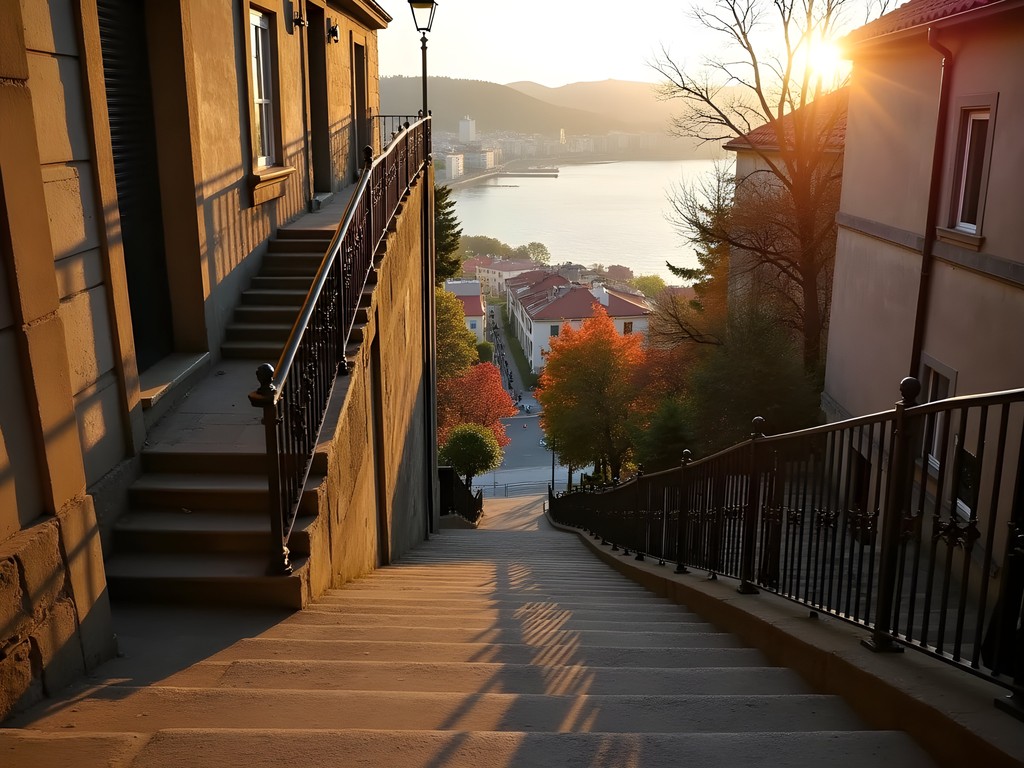
💡 Pro Tips
- Most staircases have alternative longer routes with gentler inclines for those with mobility concerns
- Carry a small water bottle as climbing in the afternoon heat can be surprisingly strenuous
- The staircases behind Hotel Londres offer the best combination of views and architectural details
La Bretxa Market: The City's Authentic Culinary Heart
While San Sebastian's pintxos bars receive endless international attention, I've found that the true pulse of Basque food culture beats strongest at La Bretxa Market. This historic market in the Old Town basement level has operated since 1870 and offers a window into the supply chains that make San Sebastian's culinary scene possible.
What makes La Bretxa special is its dual nature: the upper level has evolved to accommodate tourists, but descend the stairs to the basement floor and you enter the authentic market where local chefs and home cooks source their ingredients. The contrast between these two worlds reveals much about how sustainable food systems adapt to tourism pressure without losing their core function.
I recommend arriving early, around 8:30am, when fishmongers display the morning's catch and farmers arrange produce harvested just hours earlier. The market follows seasonal rhythms that have largely disappeared from modern food supply chains—in fall, you'll find an abundance of wild mushrooms, chestnuts, and the first cider apples that are central to Basque culinary traditions.
During my last visit, I brought my reusable produce bags which drew appreciative nods from vendors accustomed to sustainability-minded locals. These lightweight mesh bags are perfect for collecting market purchases while avoiding single-use plastics, and they fold down to almost nothing in my daypack.
Beyond shopping, La Bretxa offers opportunities for meaningful cultural exchange. Many vendors come from families that have worked these stalls for generations, and while they may not speak English, showing interest in their products often leads to warm interactions. I've found that learning just a few Basque phrases (not Spanish) opens doors to conversations about food traditions that tourists rarely experience.
The most revealing aspect of La Bretxa is how it demonstrates the short supply chains that define Basque cuisine. Products rarely travel more than 50 kilometers to reach these stalls, creating a food system with minimal environmental impact that maximizes freshness and flavor—principles I've advocated for throughout my supply chain career.
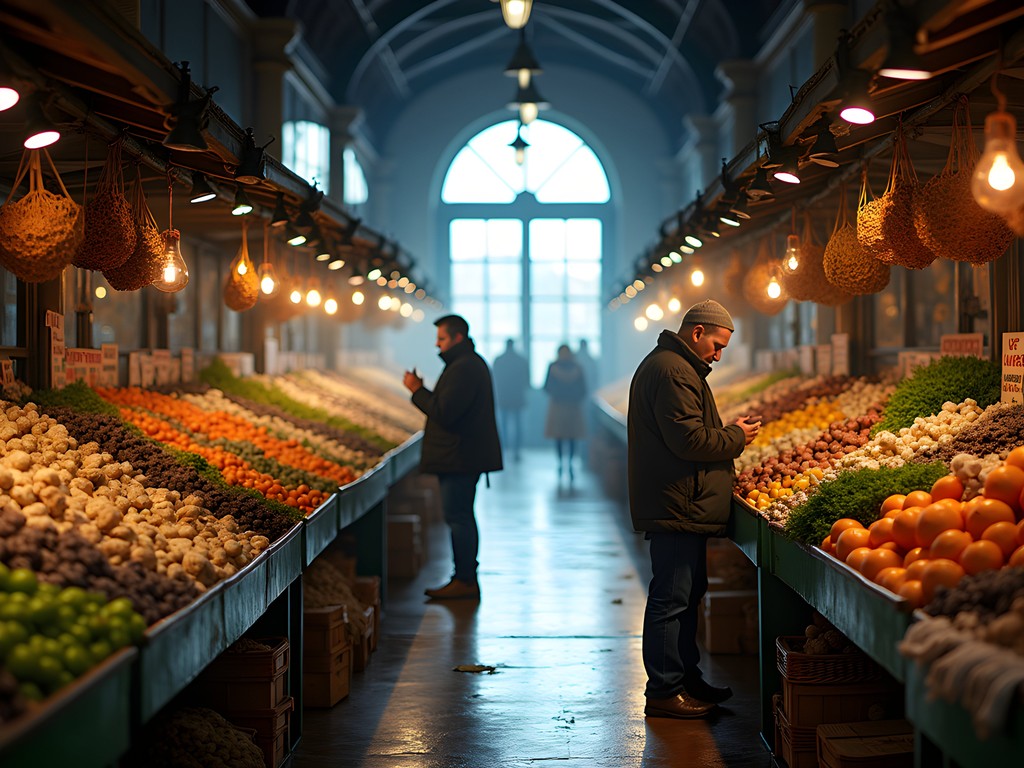
💡 Pro Tips
- Visit Tuesday through Friday for the best selection; Mondays have fewer vendors and weekends can be crowded
- The seafood selection is best within 2 hours of opening when restaurants do their purchasing
- Look for products labeled 'Baserritarra' which indicates they come directly from local farms
Tabakalera: Industrial Heritage Reimagined
San Sebastian's commitment to sustainable urban development is perhaps best exemplified by Tabakalera, a massive former tobacco factory transformed into a contemporary cultural center. This adaptive reuse project represents exactly the kind of thoughtful repurposing that cities worldwide should emulate—preserving industrial heritage while creating new public spaces that serve current community needs.
Located in the Egia neighborhood just across the Urumea River from the Old Town, Tabakalera's imposing brick façade hints at its industrial past, but inside lies a marvel of modern architectural intervention. What impresses me most is how the renovation maintained original structural elements while introducing contemporary spaces flooded with natural light.
Beyond the expected exhibition halls, Tabakalera houses a fascinating mix of public resources: free co-working spaces, a specialized art library, experimental film theaters, and creative studios where local artists work in residence. This multifunctional approach ensures the building serves diverse community needs rather than becoming yet another tourist-only attraction.
The rooftop terrace offers my favorite alternative viewpoint of San Sebastian, with panoramas extending from Monte Urgull to the river mouth. Unlike the crowded viewpoints on the main hills, this elevated urban space remains primarily used by locals, particularly at sunset when residents gather for the spectacular light show over the bay.
For those interested in sustainable urban design, Tabakalera's renovation incorporated numerous environmental features including rainwater harvesting systems, energy-efficient climate control that works with the building's thermal mass, and preservation of original materials wherever possible. It exemplifies the Japanese concept of mottainai—the recognition that resources are too valuable to waste.
During my visits, I've documented how the space changes throughout the day, capturing images with my compact camera, which handles the challenging light conditions inside the industrial space beautifully. Its small size makes it ideal for unobtrusive urban photography while delivering professional-quality images.

💡 Pro Tips
- Check the website before visiting as some exhibitions require free timed tickets
- The cafeteria on the ground floor offers surprisingly good coffee and pintxos at lower prices than tourist areas
- Visit on Thursday evenings when the building hosts free cultural programming and stays open until 10pm
Final Thoughts
As I complete my weekend exploration of San Sebastian's hidden urban treasures, I'm struck by how this compact city manages to balance its global reputation with authentic local experiences. The key to discovering the real San Sebastian lies in slowing down, observing the rhythms of daily life, and venturing beyond the well-trodden pintxos routes. The walking paths of Ulia, the timeless streets of Antiguo, the connective tissue of urban staircases, the living market culture at La Bretxa, and the thoughtful adaptive reuse at Tabakalera—these elements tell a more complete story about this remarkable coastal city. By exploring on foot with mindful intention, you'll not only reduce your environmental impact but also discover the sustainable systems that have allowed Basque culture to thrive here for centuries. I invite you to walk these paths less taken and experience the San Sebastian that locals cherish.
✨ Key Takeaways
- San Sebastian is best explored on foot, with many hidden pathways connecting different neighborhoods and elevations
- Morning visits to local markets provide insight into authentic Basque culinary traditions beyond the pintxos scene
- Repurposed industrial spaces like Tabakalera showcase the city's commitment to sustainable urban development
📋 Practical Information
Best Time to Visit
September-October (early fall)
Budget Estimate
€60-100/day for budget travelers
Recommended Duration
2-3 days minimum
Difficulty Level
Easy To Moderate (Some Hills And Stairs)









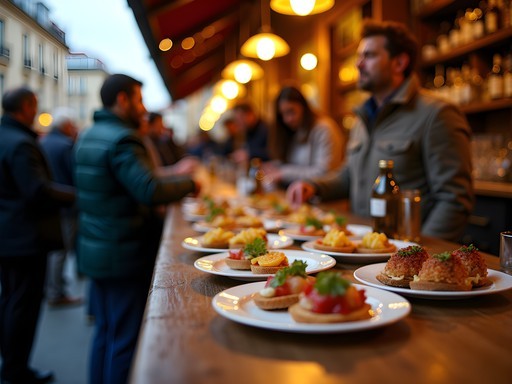





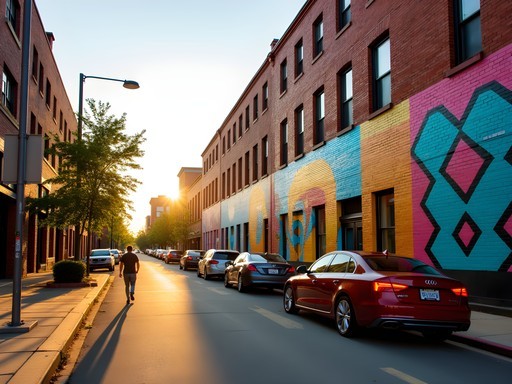
Comments
Megan Martin
Jordan, this is exactly the kind of guide I've been searching for! I'm heading to San Sebastian next month for a business conference but plan to extend my stay for the weekend. As someone who's tired of the typical tourist experience, I appreciate these off-the-beaten-path suggestions. I've added La Bretxa Market to my itinerary - looking forward to sourcing some authentic Basque ingredients. I found my pocket guidebook useful for the basics, but your local insights are invaluable for really experiencing the city. Quick question - did you find these areas easy to navigate with Google Maps or would you recommend downloading a specific offline map?
Jordan Smith
Thanks Megan! Google Maps works well in the central areas, but I'd recommend downloading the maps offline for the Ulia Mountain paths. Also, the tourist office near La Concha has excellent free walking maps that show the staircases better than any digital map!
coffeehero
Those morning views of La Concha Bay are pure magic! Your photos capture it perfectly.
summerguide
Just got back from San Sebastian and used this guide! The secret staircases were such a cool way to navigate the city - felt like we were in on some local secret. La Bretxa Market was the highlight for us though. We bought some local cheeses and cider there that were incredible. The vendor even showed us the proper way to pour the cider from height (it's harder than it looks!). We also found a tiny café near Antiguo that served the best tortilla española I've ever had. Thanks for helping us discover the non-touristy side of the city!
coffeehero
What was the name of that café? Heading there next week!
summerguide
It was called Café Garraxi! Small place, easy to miss but worth finding. The owner makes the tortilla fresh every morning.
photoone
Great post! How difficult is the Ulia Mountain path? Would you recommend good hiking shoes or are regular trainers fine?
Jordan Smith
Regular trainers worked fine for me! The path is well-maintained and not too steep. Just bring water and maybe a light jacket for the sea breeze.
Hunter Thompson
Mate! Just got back from San Sebastian last month and I completely missed these spots. Spent way too much time bar-hopping in the Old Town (no regrets there though, the pintxos were INSANE). That Ulia Mountain path sounds right up my alley - love those views away from the crowds. Definitely bookmarking this for my return trip. Did you find the locals were pretty welcoming on these less touristy routes? Sometimes I feel awkward wandering into the more residential areas.
Jordan Smith
The locals were incredibly friendly, Hunter! Especially around Antiguo - got invited for coffee twice just by asking for directions. I think they appreciate tourists who make the effort to explore beyond the usual spots.
Hunter Thompson
That's brilliant to hear! Will definitely venture out more next time. Cheers for the tips!
globevibes
Those hidden staircases sound amazing! Never knew about them despite visiting twice.
food_explorer_92
Great post! Is La Bretxa Market open every day? Planning to visit in November.
Douglas Bradley
@food_explorer_92 It's open Monday through Saturday, but Tuesday and Friday mornings have the best selection from what I've experienced. The fish section is particularly impressive around 9-10am when everything is freshly laid out.
wanderlust_emma
Those urban staircases look amazing! Added to my bucket list!
sunnyguide
Just got back from San Sebastian and used this guide as my blueprint!!! The La Bretxa Market was EVERYTHING! Got there early (like 8am) on a Saturday and watched all the local chefs buying their ingredients. One fishmonger let me sample some anchovy that literally melted in my mouth! Also found this amazing little coffee shop near those staircases by Antiguo that wasn't in any guidebook. The locals there told me about a tiny beach past Mount Ulia that was empty even in peak season. I used my pocket guide for the basics but this blog post was what really made my trip special! Thanks Jordan!!!
beachlife45
Going to San Sebastian next month! How difficult is the hike up Ulia Mountain? Is it doable for someone moderately fit?
Jordan Smith
@beachlife45 Absolutely doable! There are several paths with varying difficulty. The main trail is well-maintained with gentle inclines. Just wear proper shoes and bring water. The views are worth every step!
beachlife45
Thanks Jordan! Definitely adding this to my itinerary now.
Venture X
Premium card with 2X miles, $300 travel credit, Priority Pass